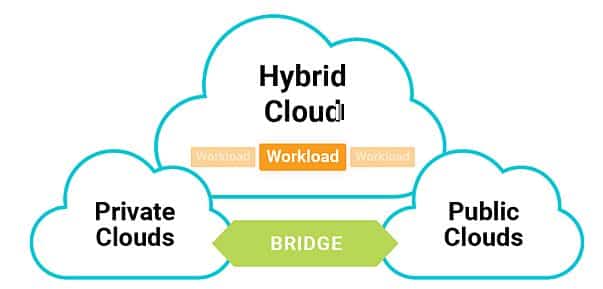Strengthen Your Hybrid Cloud with a Windows VPS
Startups

The hybrid cloud offers unmatched flexibility, combining the best of both on-premises and cloud environments. Adding a Windows VPS into the mix can be the secret ingredient you’re missing, giving you benefits like optimized resource utilization, smoother application performance, and seamless integration between disparate systems.
While Linux has always been a popular choice for devops, having a Windows VPS in a hybrid cloud environment has the following advantages:
- Compatibility: Many businesses rely heavily on Windows-based applications and tools. A Windows VPS ensures seamless integration with these existing systems.
- Flexibility: You can scale up and down resources as much as you want, since your hosting environment will be a container.
- Ease of use: Windows is the dominant computer operating system, with a 72% market share of desktop computers. If you’re accustomed to Microsoft products, you’ll enjoy working with a friendly and familiar interface.
So how does a strong Windows foundation help your hybrid cloud architecture? Let’s dig in:
What Makes Up a Hybrid Cloud?
Let’s quickly recap what we mean by a hybrid cloud. In this type of architecture, you’ll keep some programs and data on a public cloud platform, and others stored in a private cloud environment. You can then take advantage of the most relevant solutions for security, scalability, and flexibility for your entire workload. This configuration helps to best allocate your IT resources to maximize workload demands and corporate goals.
Here are the key components of hybrid cloud architecture:
- Public cloud: A third-party provider like Kamatera provides scalability, cost-effectiveness, technical support, and a wide range of services and applications.
- Private cloud: This privately owned and managed infrastructure gives you greater flexibility and resource control, which makes it especially apt for sensitive data and mission-critical operations.
- Hybrid cloud management tools: Platforms that make it easier to integrate, manage, and coordinate resources in private and public cloud systems.
- Connectivity solutions: These networking infrastructure and protocols can include technologies including VPN, SD-WAN, and dedicated interconnects to connect cloud resources securely and with optimal performance.
- Security measures: This protection includes identity and access management (IAM) solutions, firewalls, intrusion detection/prevention systems (IDS/IPS), encryption techniques, and security information/event management (SIEM) systems.
- Scalability and flexibility features: Load balancers, elastic storage solutions, and auto-scaling groups enable workload distribution and dynamic resource allocation between private and public clouds.

Benefits of a Hybrid Cloud and Windows VPS Combo
Integrating a Windows VPS into your hybrid cloud strategy offers numerous benefits:
Flexibility is one of the main advantages of hybrid cloud computing. For improved security and compliance, critical workloads can be maintained on-site in the private cloud, while less sensitive jobs can utilize the public cloud’s scale and affordability.
Incorporating a Windows VPS into your hybrid cloud strategy can enhance your disaster recovery and business continuity capabilities. You can use it as a failover option for critical Windows-based workloads.
Windows servers provide native support for the .NET framework, as well as powerful IDEs like Visual Studio, which offers robust tools for developing applications in languages such as C#, VB.NET, and ASP.NET.
If your organization relies on legacy Windows applications that aren’t cloud-native, a Windows VPS can serve as a bridge. It allows you to run these applications in a more modern, scalable environment without extensive rewriting or migration.
From Zero to Hybrid Hero: Setting Up for Success
To integrate your Windows VPS with a hybrid cloud, follow these steps:
1. Choose a VPS provider. Selecting the best cloud VPS provider for your needs is an important step. Take into account elements like scalability, location of data centers, levels of support, available operating systems, and extra features like backup and monitoring capabilities. Finding out how efficiently the VPS provider interfaces with your public cloud services is also crucial.
2. Set up your Windows VPS. After you choose a provider, the next step is to set up your VPS with a Windows OS. This process includes:
- Configure network settings: Establish network configurations for your VPS, including IP addresses, DNS, and firewall rules, to guarantee proper communication with other components of your system.
- Install and configure software: Ensure that the software is set up according to your needs. Install necessary web servers, databases, components, tools, and applications.
- Data and storage migration: Organizations can successfully migrate their data and applications with the aid of various software tools. From an administrative standpoint, these open-source or vendor data migration solutions considerably simplify the entire process.
3. Plan your integration. Following a well-thought-out blueprint is necessary for a successful VPS integration into your hybrid cloud system. The following are some crucial actions:
- Connect VPS to the public cloud. For a secure connection between your VPS and the public cloud, you can utilize a VPN or a direct network connection.
- Set up automation and orchestration. To manage resources throughout your hybrid cloud, use automation and orchestration tools like Ansible, Terraform, or Kubernetes.
- Set up the security. To protect your data and applications, implement complete security protocols, including encryption, authentication, and regular security audits.
Conclusion
The goal of a hybrid cloud strategy is to create an IT environment that’s greater than the sum of its parts. A Windows VPS can be a key component in achieving this, allowing you to synergize the best of both the Windows ecosystem and the cloud’s scalability and flexibility. As you continue to refine and optimize your cloud strategy, consider how a Windows VPS might be the missing piece that takes your IT infrastructure to the next level.


